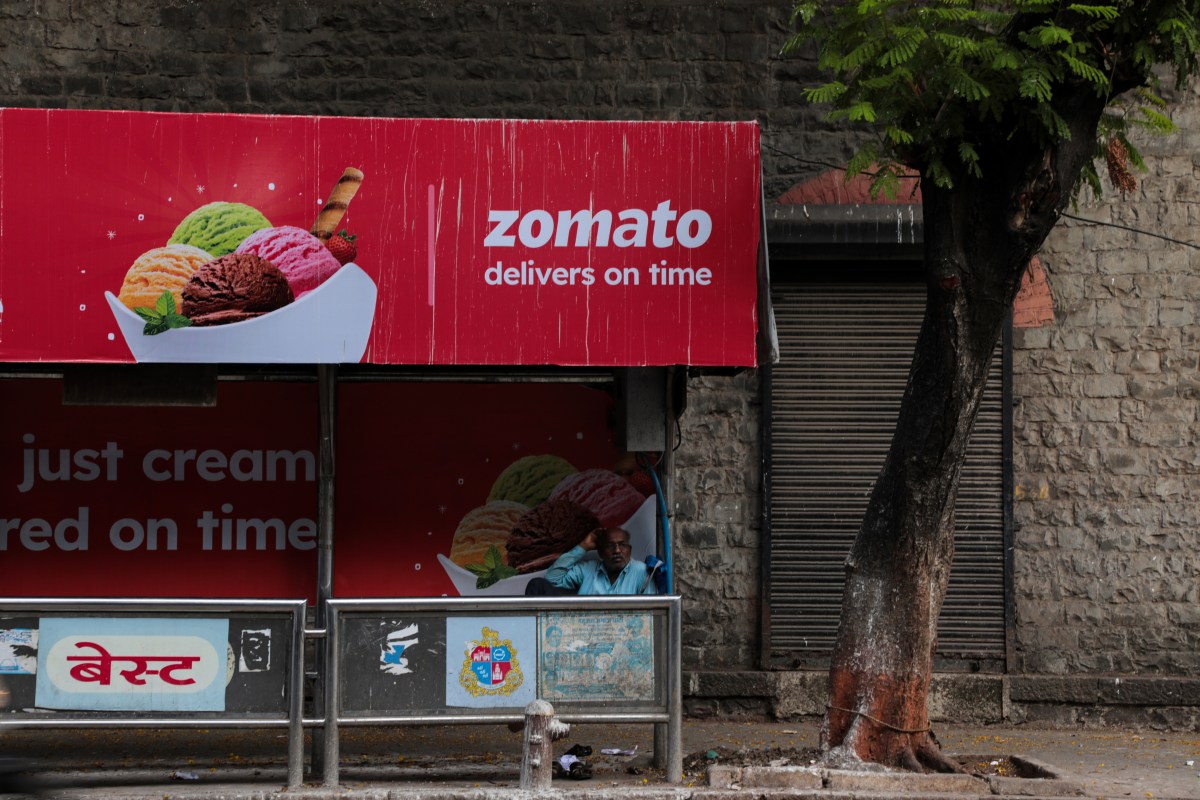Blinkit’s Rapid Rise: Conquering India‘s Quick-Commerce Battlefield
A Market Under Siege
Table of Contents
- A Market Under Siege
- The Balancing Act: Growth vs. Profitability
- Customer Loyalty: A Crucial Battleground
- The Shifting Landscape: Quick Commerce vs. Food Delivery
- Looking Ahead: A Future Defined by Speed and Convenience
- Navigating Financial Headwinds
- Customer Loyalty Amidst Competitive Pressure
- A Shifting Landscape: Growth in Quick Commerce vs. Food Delivery
- Looking Ahead: A Future Defined by Speed and Convenience
Zomato’s quick-commerce venture, Blinkit, is making waves across India with an aggressive expansion strategy. Aiming to reach a staggering 2,000 dark stores by the end of next year—a full year ahead of schedule—Blinkit is rapidly establishing itself as a dominant force in the burgeoning instant delivery market. This ambitious push comes amidst a fierce battle for supremacy within India’s quick-commerce landscape, with rivals like Zepto and established e-commerce giants such as Flipkart and Amazon vying for consumer loyalty.
JPMorgan analysts have dubbed this phase of the Indian quick-commerce industry “land grab mode,” where companies are aggressively securing market share through a combination of store rentals, enticing product discounts, and loyalty programs. This intense competition is fueling rapid growth in the sector, forcing traditional e-commerce businesses to revamp their supply chains to meet the evolving demands of consumers who crave speed and convenience.
The Balancing Act: Growth vs. Profitability
While Blinkit’s ambitious expansion plans are undoubtedly aimed at capturing market share and achieving long-term profitability, they come with a significant financial burden. The company reported losses of ₹1.03 billion ($11.9 million) in the third quarter of [Year], highlighting the substantial investment required to fuel this rapid growth. This raises crucial questions about the sustainability of such aggressive expansion strategies and the long-term viability of quick-commerce businesses operating on razor-thin margins.
Customer Loyalty: A Crucial Battleground
In a market saturated with options, customer loyalty is paramount for success in the quick-commerce space. Blinkit faces stiff competition from established players like Amazon and Flipkart, who leverage their vast resources and existing customer bases to offer competitive pricing and delivery times. To stand out, Blinkit must cultivate strong customer relationships through personalized experiences, exceptional service, and a curated selection of products that cater to specific consumer needs.
The Shifting Landscape: Quick Commerce vs. Food Delivery
The quick-commerce landscape is constantly evolving, with new players emerging and existing businesses adapting their strategies. While Blinkit primarily focuses on delivering everyday essentials, the lines between quick commerce and food delivery are increasingly blurring. Companies like Swiggy and Zomato are expanding their offerings beyond restaurant meals to include grocery deliveries, creating a more complex and competitive environment for all players in the market.
Looking Ahead: A Future Defined by Speed and Convenience
The future of quick commerce in India appears bright, driven by a growing middle class with increasing disposable income and a preference for convenience. As technology continues to advance, we can expect even faster delivery times, more personalized shopping experiences, and the integration of artificial intelligence to optimize logistics and inventory management.
The Rise of Quick Commerce: Blinkit’s Race Against Time
Zomato, the Indian food delivery giant, is making waves in the burgeoning quick commerce market with its subsidiary, Blinkit. This high-speed grocery and essentials delivery platform has become a major player, capturing significant market share and attracting millions of users. However, Blinkit’s rapid growth comes at a cost, as the company grapples with financial challenges and intense competition.
Blinkit’s current financial year is marked by substantial investments required for its aggressive expansion strategy, leading to continued losses. Akshant Goyal, Zomato’s chief financial officer, acknowledges this reality, stating, “As we continue to expand our store network, there will be a period of investment before we see significant returns.” Despite these challenges, Goyal remains optimistic about the company’s long-term prospects, believing that achieving greater scale will ultimately drive profitability.
This financial pressure highlights the inherent challenges in scaling a quick commerce business. The need for extensive logistics infrastructure, including strategically located dark stores and a robust delivery network, requires significant upfront capital investment. This is further compounded by the competitive landscape, where companies are vying for market share through aggressive pricing strategies and promotional offers.
Customer Loyalty Amidst Competitive Pressure
Despite the intense competition, Blinkit enjoys strong customer loyalty. In December, loyal customers accounted for one-third of the platform’s gross order value, demonstrating a clear preference for Blinkit’s speed and convenience. However, the company acknowledges that competitive pressure is impacting its margins.
Albinder Dhindsa, who leads Blinkit, draws parallels to the early days of food delivery, when heightened competition led to significant investments in customer acquisition across the industry. He believes that this period of intense competition will ultimately benefit consumers by driving innovation and improving service quality. This echoes the sentiment expressed by many industry experts who view the current competitive landscape as a catalyst for growth and improvement within the quick commerce sector.
A Shifting Landscape: Growth in Quick Commerce vs. Food Delivery
While Zomato’s core food delivery business continues to grow, albeit at a slower pace (17% growth in the third quarter compared to the previous year), its quick-commerce division is experiencing explosive growth (120% growth). This shift highlights the increasing consumer demand for instant delivery and the potential of quick commerce as a major revenue driver for Zomato.
This trend towards quick commerce is evident across the globe, with companies like Instacart and Gorillas experiencing significant growth in recent years. The convenience factor offered by these platforms, coupled with the increasing adoption of mobile ordering and payment systems, has fueled this surge in demand.
Looking Ahead: A Future Defined by Speed and Convenience
The Indian quick-commerce market is poised for continued rapid growth, driven by factors such as rising smartphone penetration, increasing internet access, and evolving consumer preferences. Blinkit’s aggressive expansion strategy positions it well to capitalize on this opportunity. However, the company faces significant challenges in maintaining profitability amidst intense competition and managing its rapidly growing network of dark stores.
To navigate these challenges successfully, Blinkit will need to focus on optimizing its logistics operations, exploring innovative pricing models, and fostering strong relationships with both customers and suppliers. The company’s ability to adapt and innovate will ultimately determine its success in this dynamic and competitive market.


